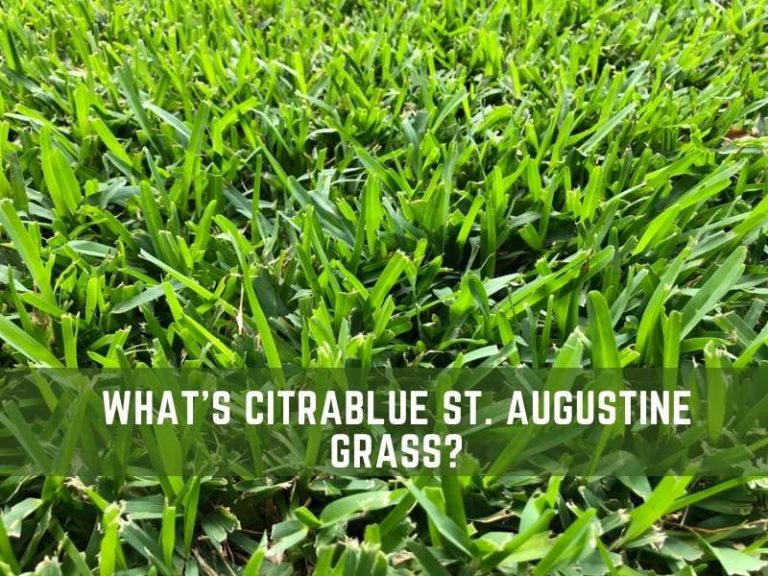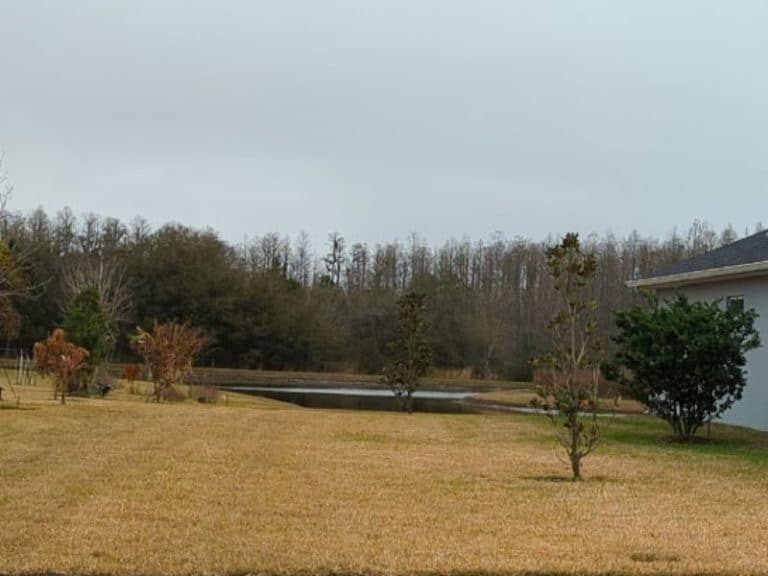6 Ways to Make St. Augustine Grass Spread Fast and Grow Thick
St. Augustine grass grows and spreads with above-ground shoots called stolons. If your lawn is thin and sparse, you can start a care program to make it grow thick and fill in the bare spots quickly. But how can you make St. Augustine grass spread quickly?
To make St. Augustine grass spread quickly and grow thicker, plant sods in early summer in well-draining soil with a pH range of 5.0 – 8.5. When planting, apply a phosphorus fertilizer for faster root development and water lightly twice a day for the first 14 days. Mow your new sod high to allow the stolons to spread and thicken easily.
After laying St. Augustine grass sod, ensure that you do not push the lawn too much and too soon with excessive fertilizer and weed control herbicides until the grass is at least 50% greened up.
Table of Contents
Does St. Augustine Grass Spread After Sodding?
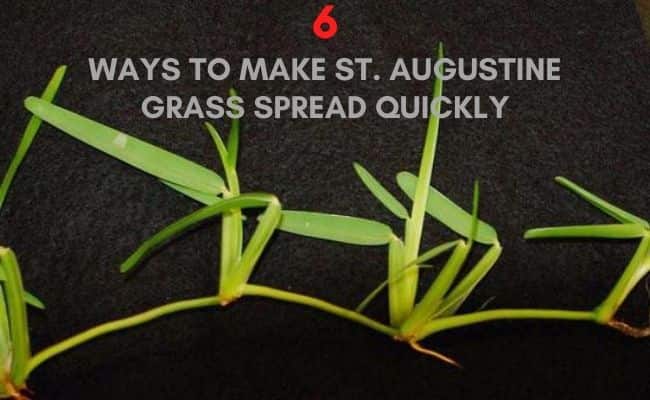
Yes, St. Augustine grass spreads through runners above the ground and below the surface. The rhizomes and stolons usually start to spread quickly when the grass is well established after sodding in full sun and when the soil is warm and moist.
You can help the grass spread faster and fill out thin areas in your lawn by feeding with the NPK fertilizer (high in phosphorus ) and maintaining a proper watering schedule.
I’ve discussed these and more tips to make St. Augustine grass spread and grow thick below.
How to Make St. Augustine Grass Spread Quickly + Grow Thick
With proper care and maintenance, St. Augustine grass can grow thick and full really fast, especially during the peak growing season. To spread this turfgrass quickly, you may want to begin the care schedule early enough – even with sod establishment for a dense growth pattern.
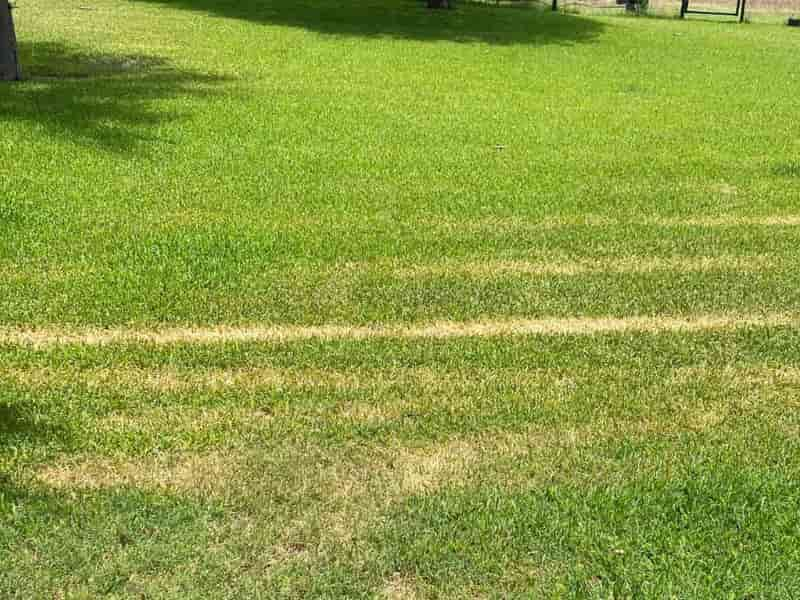
Here’s how to make St. Augustine grass grow thick and spread quickly:
1. Prepare the Soil for St. Augustine Plugs
The first step to making St. Augustine grass grow thicker and fuller is installing the plugs/sod on well-draining soil with a pH range between 5.0 and 8.5. When the soil and growing conditions are ideal, St. Augustine sod will develop firm roots and start to spread quickly within 14 days post-installation.
- An acidic pH is ideal for a thicker, fuller St. Augustine lawn.
- St. Augustine grass prefers a well-draining soil type, such as sandy soil.
You can make the St. Augustine grass runners spread 500 quickly by top-dressing the lawn with sand – preferably a sandy loam soil premix – to improve drainage and aeration and encourage faster growth.
Pro tip: In alkaline soils (above pH 7.5), St. Augustine grass will develop a chlorotic appearance 500 instead of the typical attractive blue-green color with coarse-textured leaf blades.
If you’re installing plugs on clay or waterlogging and compacted soil, you might want to amend the soil first 500 to improve the chances of establishing a thicker lawn.
2. Plant in Early Summer
To ensure faster spread, establish your St. Augustine lawn early in the summer to give the grass a head start when the temperatures rise to the ideal range of 80-100 °F. Plant the sod in full sun 3 months before the first frost of the year to give the grass enough time to develop and grow thick.
Be careful not to plant in late fall because the grass will suffer from low temperatures (being a warm-season turfgrass). You’ll notice slowed growth and poor spread, leaving your yard with a thin cover and bare spots.
Pro tip: You can still lay St. Augustine sod in late spring and establish a thick lawn because temperatures will have warmed up enough for faster growth and spread. During this time, shoot and root growth will start to peak in U.S. Department of Agriculture plant hardiness zones 8 through 10.
3. Apply a Phosphorus Fertilizer Early On
Fertilizer is really important in speeding up the spread of St. Augustine grass. In the early stages post-installation, apply a starter phosphorus fertilizer to stimulate faster root growth and establishment. Do this for the initial 2 months before switching to slow-release nitrogen fertilizer.
- Start with a generous fertilizer application – high phosphorus in the NPK ratio.
- Apply a nitrogen fertilizer to promote faster growth of shoots and spread of runners.
The rule of thumb when fertilizing a St. Augustine lawn is 1 pound of nitrogen per 1000 square feet of grass once every two months. Alternatively, apply a slow-release nitrogen fertilizer once every 10 weeks to maintain a faster spread and growth rate for St. Augustine grass.
See Also: Best Weed and Feed for St. Augustine Grass 500
4. Proper Watering
The best way to make St. Augustine grass spread quickly 500 is to water lightly immediately after installation. If the weather is too hot, water twice daily for the first 14 days until the roots are firmly established to ensure the grass grows thicker.
Once the roots are established and the runners have started to spread, slowly cut back the irrigation from ½-inch to about ¾ inch of water twice per week (for a total of about 1 ½ inches of water per week).
Keep in mind that without proper watering, St. Augustine grass will easily go into dormancy or start dying. Reviving and making the grass grow back will take a lot of effort.
Also, too much water can easily cause sogginess in your yard. Clearing mud in your yard takes a lot of effort, so keep the water levels in check.
Pro tip: Avoid over-watering lawns to prevent related problems since it causes roots to drown, suffocate, and die off.
5. Get Rid of Weeds on Time
Weeds will invade a new St. Augustine lawn, depending on its installation. Warm-season lawns established during early spring become susceptible to weeds. If you leave spaces during installation, you’ll notice common St Augustine grassy and broadleaf weeds 500 growing between the sod patches.
Weeds compete for nutrients and water, making St. Augustine grass grow slowly and form a thin, sparse lawn. The proper fix is to kill weeds with pre-emergent or apply a mild herbicide.
- Apply a pre-emergent herbicide at least 5 weeks before installing your sod to control weeds and allow your grass to grow and spread quickly.
- If you want to lay your sod early, wait until late spring when temperatures warm to allow the grass to fill the spaces and choke out weeds.
Weeds like crabgrass are established in early spring and grow through summer. Ensure you kill them with a good crabgrass killer 500to ensure your lawn grows thicker and spreads faster.
6. Mow High for a Start
St. Augustine grass should be mowed at 2.5 to 4.0 inches often enough to avoid cutting more than one-third of the leaf blades to encourage fast growth and spread. Since this turfgrass spreads through above-ground stems called stolons, the grass is prone to injury when mowed too low or scalped.
On the hot summer days, your grass may spread slowly due to drought stress. You can fix this by watering more often and mowing less often than usual every 5 to 7 days to encourage the St. Augustine lawn to grow thicker and fuller.
How Long Does It Take for St. Augustine Grass To Spread?
St. Augustine grass plugs will take about 7-14 days to start spreading and filling up the bare spots in your lawn. Newly installed plugs take up to two weeks for the roots to grow enough to hold the plugs firmly on the ground.
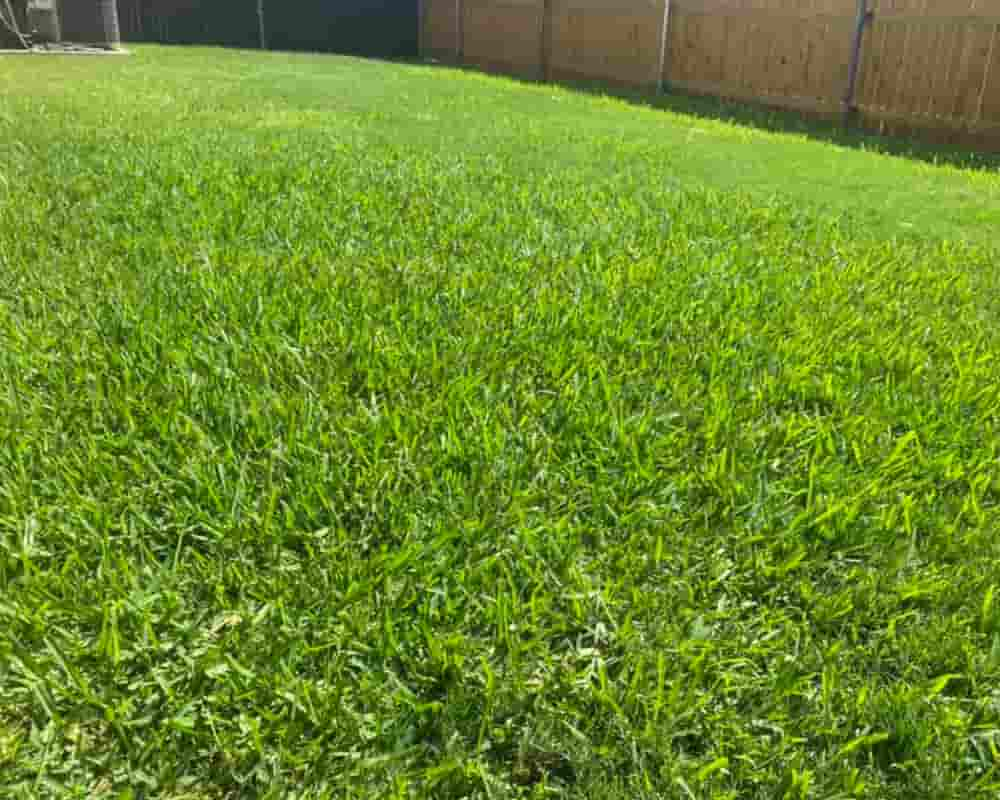
Once the roots are well established, the grass will start to grow and spread quickly, especially during the peak growing seasons. However, if your lawn is not filling in fast enough, apply 1 lb of nitrogen per 1000 sq. ft. to speed up growth.
Pro tip: St. Augustine grass grows and spreads fast in the warmth of spring and summer. Start to push your lawn for a quicker growth rate when soil temperatures are around 80-100 °F.
Why Do St. Augustine Runners Spread on Top of Each Other?
A thick St. Augustine lawn is a thick mesh of interwoven runners. Sometimes, these runners do not grow close to the surface, especially in the spring when the grass comes out of dormancy and starts to grow aggressively.
When the runners grow on top of each other instead of spreading on the soil’s surface, the lawn starts to lose shape and appears not to fill in the thin spots. This is called looping and is usually a result of either mowing too low, overfertilization, or too much pre-emergent herbicide.
Nutrient deficiency can also force St. Augustine runners to spread on top of each other instead of getting attached to the soil to compete for nutrients.
When Do St. Augustine Grass Roots Grow Fast?
Like most warm-season grasses, St. Augustine grass shoots grow slower as the days become shorter in late summer. The grass accumulates food reserves in preparation for the dormancy period.
In late spring and early summer, the roots of St. Augustine grass grow fast; this is where their development occurs most during warm climates. You can speed up the spread of warm-season grass and make it grow thick during this time by applying fertilizer that stimulates root growth.
FAQs
Does cutting St. Augustine grass help it spread?
Yes, proper mowing or cutting St. Augustine grass does help to encourage lateral growth, causing new shoots to grow and reducing competition for nutrients, sunlight, and water with common weeds. Regularly mowing St Augustine grass is a healthier lawn practice that helps fill in the gaps and create a denser turf. Also, proper mowing makes your lawn neat, well-kept, and enjoyable.
How do I get a lush St. Augustine lawn?
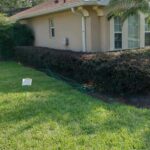
Select quality St. Augustine seeds/sods carefully adaptable to your location to achieve a lush St. Augustine lawn. Test the soil to determine pH and amend it appropriately, and maintain proper care and maintenance practices (watering, fertilization, weeding, pest and disease control, aeration, dethatching), plus have/ maintain a St. Augustine calendar for your lawn.
What makes St. Augustine spread?
St. Augustine grass spreads through above-ground stolons (also called runners). The above-ground stems develop a rooting node that grows along the soil’s surface, allowing the grass to establish new shoots/ plants. Proper care and maintenance practices like mowing, watering, and fertilization, enhance the ability to spread and establish a healthy, dense turf and gradually fill in the available open spaces.
Why do I have bare spots in my St. Augustine grass?
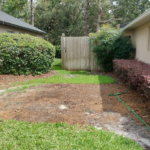
Bare spots may occur for different reasons, from seasonality and environmental to improper lawn care practices. Compact and poor-quality soil, heavy foot traffic, inadequate watering, improper mowing, shade or inadequate sunlight, diseases and pests, and pet and human urine can leave bare spots in your St. Augustine lawns. It’s crucial to identify the cause to address and rectify it effectively.
Remedial measures may include proper mowing, fertilization, improving soil texture and structure, trimming the bushes to allow sunlight, reseeding or resodding, and taking care/ training pets and kids to prevent urination. These measures also may encourage St. Augustine grass spread and can be adopted as preventative measures for bare spots on St. Augustine lawns.
References
- Richard L. Duble, Turfgrass Specialist, Texas Cooperative Extension: St. Augustine Grass Care and Maintenance Guide
- Gene R. Taylor II and Jason Gray, The Texas A&M University System: Maintaining St. Augustinegrass Lawns

